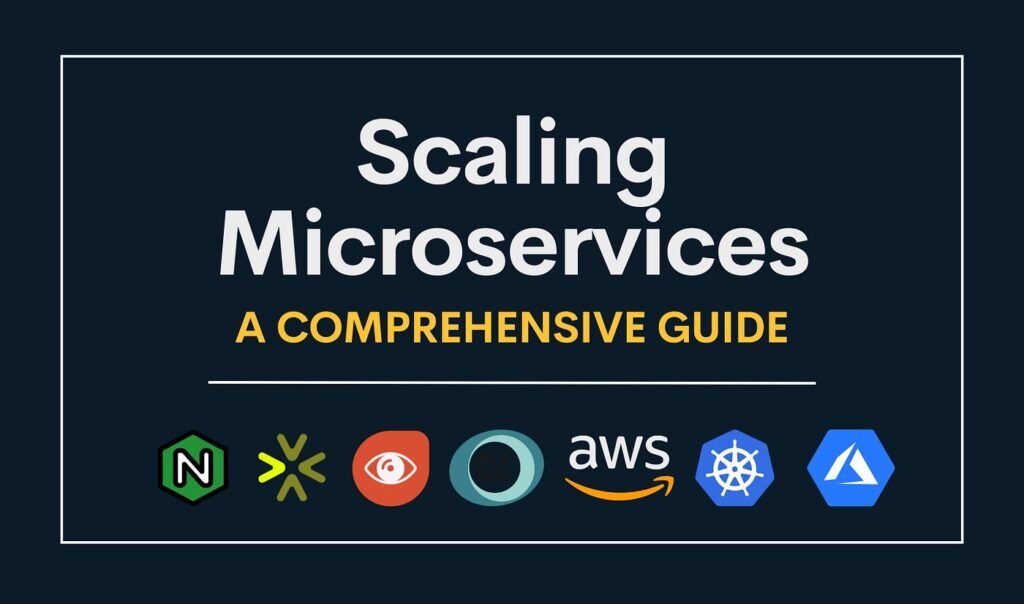In the world of modern software development, microservices have gained popularity as an architectural style for creating scalable, flexible, and maintainable applications. Microservices break down an application into smaller, independent services that can be developed, deployed, and maintained separately. This architecture is especially beneficial for large-scale systems where different services need to scale independently to meet user demands.
In this blog, we will explore how to build scalable microservices, the key principles involved, and best practices to ensure your microservices-based architecture can handle growth efficiently.
What are Microservices?
Microservices are an architectural approach where an application is built as a collection of loosely coupled services. Each service is responsible for a specific business functionality, and these services communicate with each other through lightweight protocols, often HTTP/REST or messaging queues. Microservices allow different parts of an application to scale independently, which makes them ideal for applications that require high scalability and flexibility.
Key Benefits of Microservices Architecture:
- Scalability: Each microservice can be scaled independently, allowing specific services to grow based on demand without affecting the entire system.
- Flexibility: Microservices enable teams to work on different services concurrently, speeding up development and deployment.
- Resilience: Microservices architecture promotes fault isolation. If one service fails, it doesn’t necessarily bring down the entire application.
- Technology Agnostic: Different services can be built using different programming languages and technologies.
Steps to Build Scalable Microservices
1. Design Microservices with Business Capabilities in Mind
Each microservice should represent a specific business function, such as order processing, user authentication, or payment handling. By aligning services with business capabilities, it becomes easier to scale individual services based on specific needs. Ensure that each service is independent and loosely coupled.
2. Use API Gateways
An API gateway serves as a single entry point for all microservices. It routes requests to the appropriate service, handles authentication, rate limiting, and other cross-cutting concerns like logging and security. API gateways help simplify communication between clients and microservices and improve scalability by optimizing service calls.
3. Leverage Containerization with Docker
Using containers like Docker is essential for microservices as they provide isolated environments for running services. Containers enable consistent deployment across environments, improving scalability and portability. Each microservice can be deployed as a container and managed independently.
4. Implement Service Discovery
In a microservices architecture, services need to find and communicate with each other. Service discovery mechanisms, such as Consul, Eureka, or Kubernetes, provide a way for microservices to register and discover each other without hard-coded addresses. This is crucial for scaling, as new instances of services can be added dynamically.
5. Ensure Statelessness and Use Distributed Data Stores
Microservices should be stateless, meaning that they do not retain any session-specific data. Instead, state data should be stored in external distributed data stores like Redis, Cassandra, or Amazon DynamoDB. Stateless services can be easily scaled horizontally by adding more instances without worrying about data consistency.
6. Use Asynchronous Communication for Better Performance
Microservices can communicate with each other synchronously (e.g., via HTTP) or asynchronously (e.g., via message queues). To build scalable microservices, use asynchronous messaging systems like RabbitMQ, Kafka, or AWS SQS to handle communication between services. Asynchronous messaging improves performance by reducing dependencies between services and allows for better load distribution.
7. Implement Horizontal Scaling
One of the main advantages of microservices is the ability to scale individual services horizontally. This involves adding more instances of a service behind a load balancer to handle increased traffic. You can automate this scaling with platforms like Kubernetes or AWS Elastic Beanstalk, which dynamically scale services based on traffic load.
8. Monitor and Manage Microservices
To ensure that your microservices scale effectively, monitoring is crucial. Use tools like Prometheus, Grafana, or ELK Stack (Elasticsearch, Logstash, Kibana) to monitor the performance and health of each service. Set up automated alerts for failures, performance bottlenecks, or unusual activity, and implement observability using distributed tracing tools like Jaeger or Zipkin.
9. Implement Load Balancing
Load balancing ensures that incoming requests are distributed evenly across multiple service instances. Tools like NGINX, HAProxy, or cloud-native load balancers (AWS ELB, Google Cloud Load Balancer) help maintain performance and reliability under high traffic by distributing the load efficiently.
10. Deploy with Continuous Integration/Continuous Delivery (CI/CD)
A well-implemented CI/CD pipeline is key to deploying and scaling microservices smoothly. Automating the build, testing, and deployment process ensures that microservices can be updated independently and continuously. Tools like Jenkins, GitLab CI, or CircleCI can help automate the CI/CD process and make scaling hassle-free.
Best Practices for Scaling Microservices
- Decouple services: Avoid tight coupling between services to allow them to scale independently.
- Optimize service boundaries: Carefully design the boundaries of microservices to avoid bottlenecks in scalability.
- Use caching: Implement caching strategies (e.g., with Redis or Memcached) to reduce the load on services and databases.
- Database per service: Each microservice should have its own database to avoid contention between services, which improves scalability.
- Automate scaling: Use platforms like Kubernetes to handle scaling automatically based on traffic and resource consumption.
- Fail fast and retry: Implement error-handling mechanisms that allow services to fail quickly and retry operations without cascading failures.
Conclusion
Building scalable microservices involves a combination of design principles, tools, and best practices that allow for independent scaling, fault tolerance, and high availability. By leveraging tools like Docker, Kubernetes, and message queues, you can ensure that each service can scale based on demand, and with proper monitoring and CI/CD pipelines in place, scaling becomes a seamless process.
At TechsterTech, we specialize in microservices architecture and scaling strategies to help businesses achieve better performance and reliability. Contact us today to learn more about how we can assist you with microservices development and scalability solutions.



